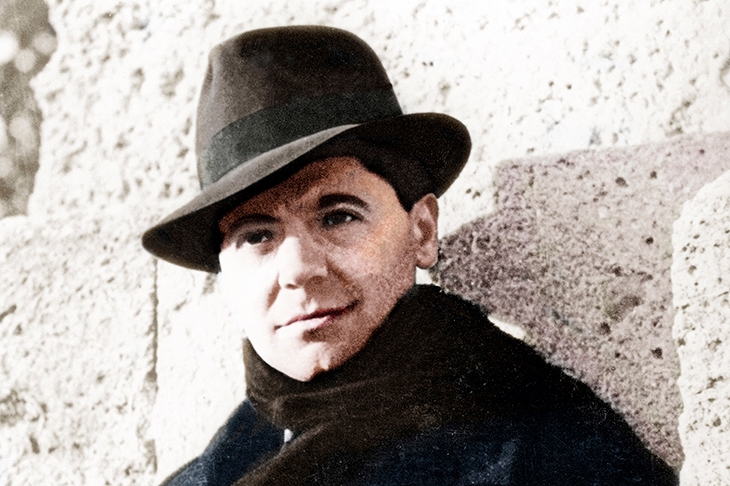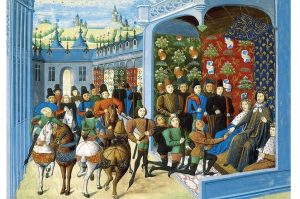Für dich, Tommy, ist der Krieg vorbei. However, many British servicemen, officers especially, didn’t want their war to be over. Or, at least, didn’t want to spend it in a PoW camp. One of the enduring myths of World War Two is that officers had a statutory obligation to escape, but nothing in King’s Regulations required it. Most just saw it as their duty to rejoin their units. The German military courts that tried escaping officers generally viewed it that way too.
Besides escapers, there were those evading capture, particularly downed airmen. In December 1939 a special meeting of the Joint Intelligence Committee discussed how to help them. Present were the heads of MI5 (the ‘Directorate of Military Intelligence, Section 5’, cover name for the Security Service), MI6 (cover for the Secret Intelligence Service) and the Naval Intelligence Division. The result was the creation of MI9. The section would also be responsible for the interrogation of enemy PoWs, though 18 months later a new section, MI19, was created solely for this.
MI9’s work was twofold. First, to get information and gadgets into the camps, and to servicemen prone to capture. The gadgetry is said to have inspired ‘Q Branch’ in Ian Fleming’s Bond novels. Secondly, to set up ‘lines’ along which escapers and evaders could be passed, mainly into Spain or direct to Gibraltar from Marseilles. One of these, the ‘Pat’ line, proved so effective that it could get downed airmen back to England from northern France via Madrid and Gibraltar in 12 days.
Switzerland was nearer, but tough to get even close to and across the border, and then tricky to get out of again. Escapers and evaders in Germany could expect no local help. Airey Neave, the man who probably did most to get Margaret Thatcher elected leader of the Conservative party, and her shadow Northern Ireland minister before being murdered by the IRA, made the first ‘home run’ from Colditz, alongside a Dutch officer. Only self-sufficiency and willingness to use cold steel got them to Switzerland. As soon as he reached London, Neave became one of MI9’s key operators.
Helen Fry has over the years devoted much study to British intelligence in the war and has mined the recently opened MI9 files deeply. Several recent books have shone light on the heroic part women played in the story of intelligence, and Fry illuminates their role even more — their lead, indeed, in the various escape lines, especially in Italy, and also, for the first time, something of their role in the interrogation of returnees, the principal source of escape and evasion intelligence.
She is at pains to emphasize the wider intelligence value of MI9, hitherto underplayed. Unlike MI6 however, intelligence was incidental to MI9’s function rather than its raison d’être, and its wider operational value remains, I think, questionable, and certainly difficult to quantify. As, indeed, are the numbers that MI9 got home. Fry claims, for example, that ‘all except 300 of the several thousand soldiers who had not been evacuated [at Dunkirk]’ were smuggled back, which cannot be right. It is a noble, moving and inspiring book nevertheless, although such a wide-ranging account needs a far better index.
Besides the Germans, one of MI9’s constant concerns was the Special Operations Executive. Churchill’s instruction ‘to set Europe alight’ meant that their lines, literally, could cross, and perilously; for while MI9’s work was essentially silent, SOE’s with the French Resistance was at times deliberately noisy. Patrick Marnham’s story of one of SOE’s networks is a fascinating tale of deception and betrayal. He begins:
‘On a summer’s day in 1943 in occupied France, German security police delivered a double blow to the French Resistance. In the Sologne, in central France, on the morning of 21 June, they struck PROSPER, the largest resistance network formed by SOE in readiness for the national insurrection that was planned to accompany the D-Day landings. More than 300 members of the network were arrested. Many were tortured and deported, others were shot. And in a separate police operation on the same afternoon, in the southern city of Lyons, a resistance courier who had been persuaded to collaborate with the Germans led a Gestapo raiding party to a secret meeting where they arrested ‘Max’, the political head of the French Resistance.’
‘Max’ was the field name of Jean Moulin, a civil servant who’d been sent into occupied France as an agent of General de Gaulle. His arrest came just a month after he’d united the Resistance movement behind le Général. In a biography of Moulin published 20 years ago, Marnham suggested that two senior members of the Resistance, then still alive, may have been partly responsible for what happened. Though he mentioned the Sologne in passing, he made no connection between the two police operations, as they appeared coincidental.
But shortly after publication he received an anonymous letter — ‘16 closely typed pages of A4’ — telling him his solution was wrong and that the key to the mystery lay in uncovering the link between those two disasters. The writer, calling himself ‘the Ghost’, gave some useful leads, but also ‘a random jumble of names and events’ that apparently ‘made no sense’:
‘The curious goings on at Cliveden… The Ordre Martiniste-Synarchique, the frankly weird Otto Rahn, the conference room at Rastenburg, a man called Stuelpnagel and the history of the cross of Lorraine… the feast day of John the Baptist…’
[special_offer]
Then the Ghost taunted him with: ‘There now, I’ve virtually handed it to you on a plate… The jewel in the crown is there, most definitely, waiting to be found.’ Marnham put aside the letter as ‘a malicious curiosity’. But ‘then something quite unexpected happened’.
Marnham is painstakingly forensic in his search for the jewel, and his pen is no less thrilling than that of Le Carré or Forsyth: ‘Bodington [a member of SOE’s F-section] terminated his trip to Paris at the first opportunity, leaving on the third night of the August moon…’
This is a masterly analysis, impeccably presented.
This article was originally published in The Spectator’s UK magazine. Subscribe to the US edition here.


















